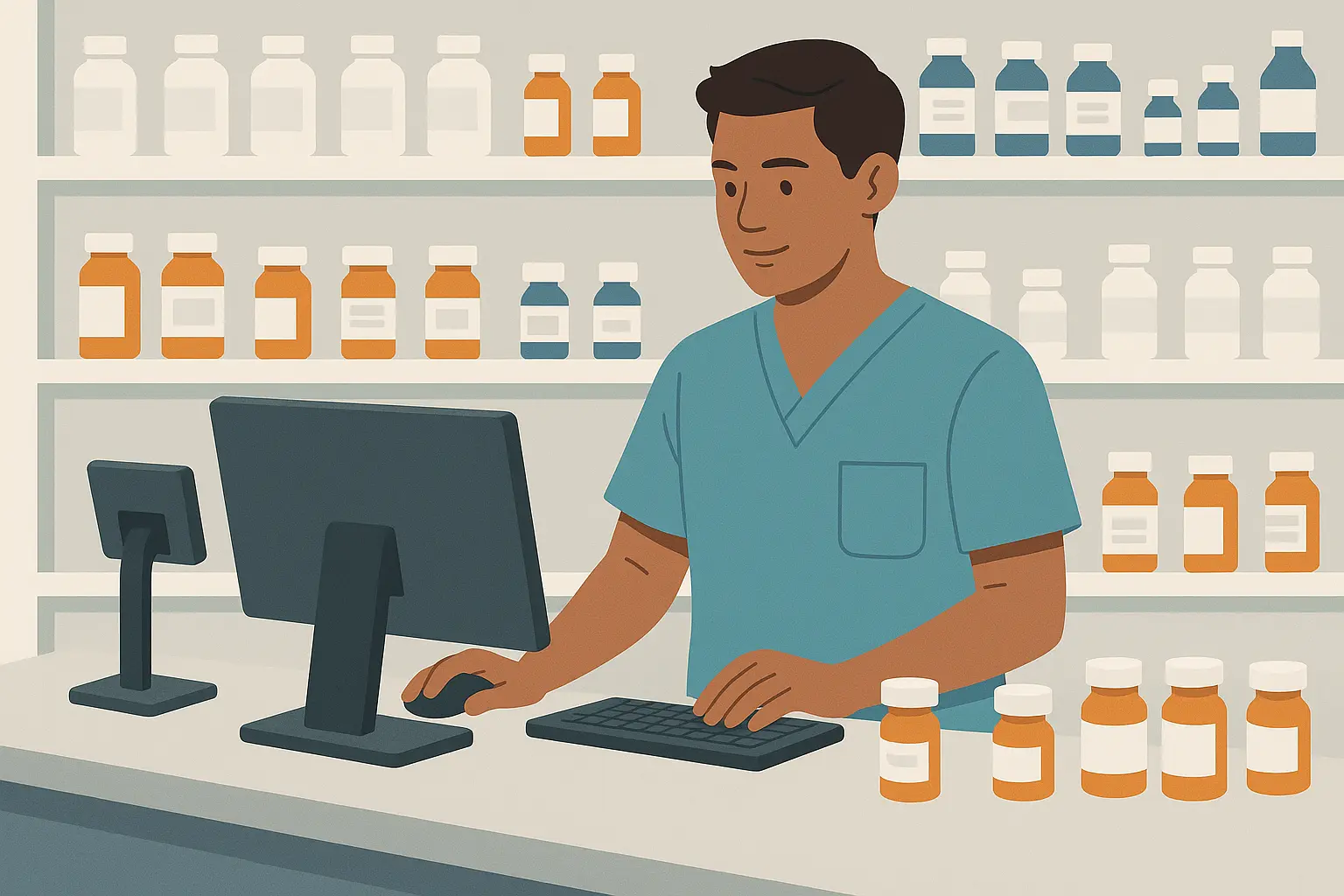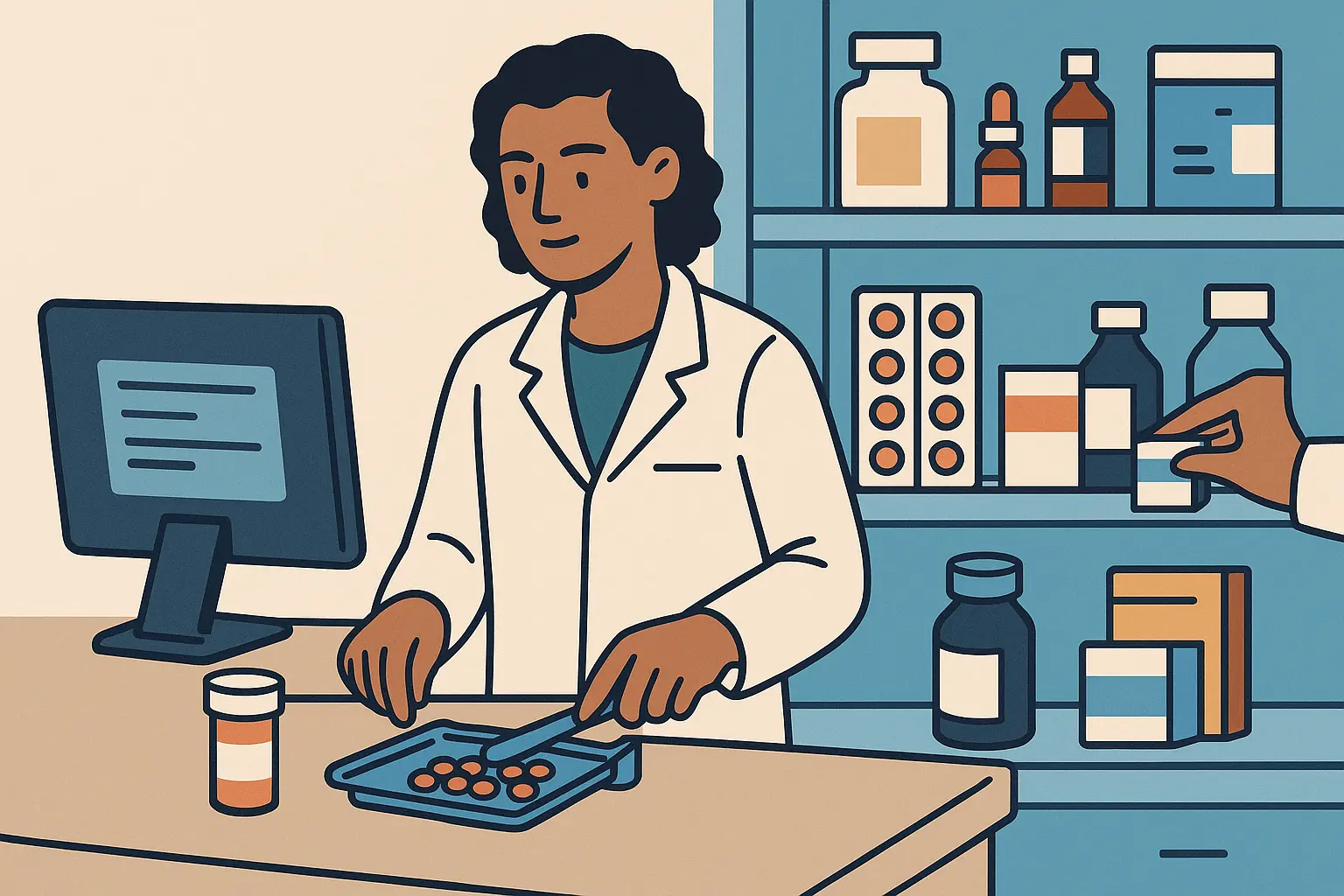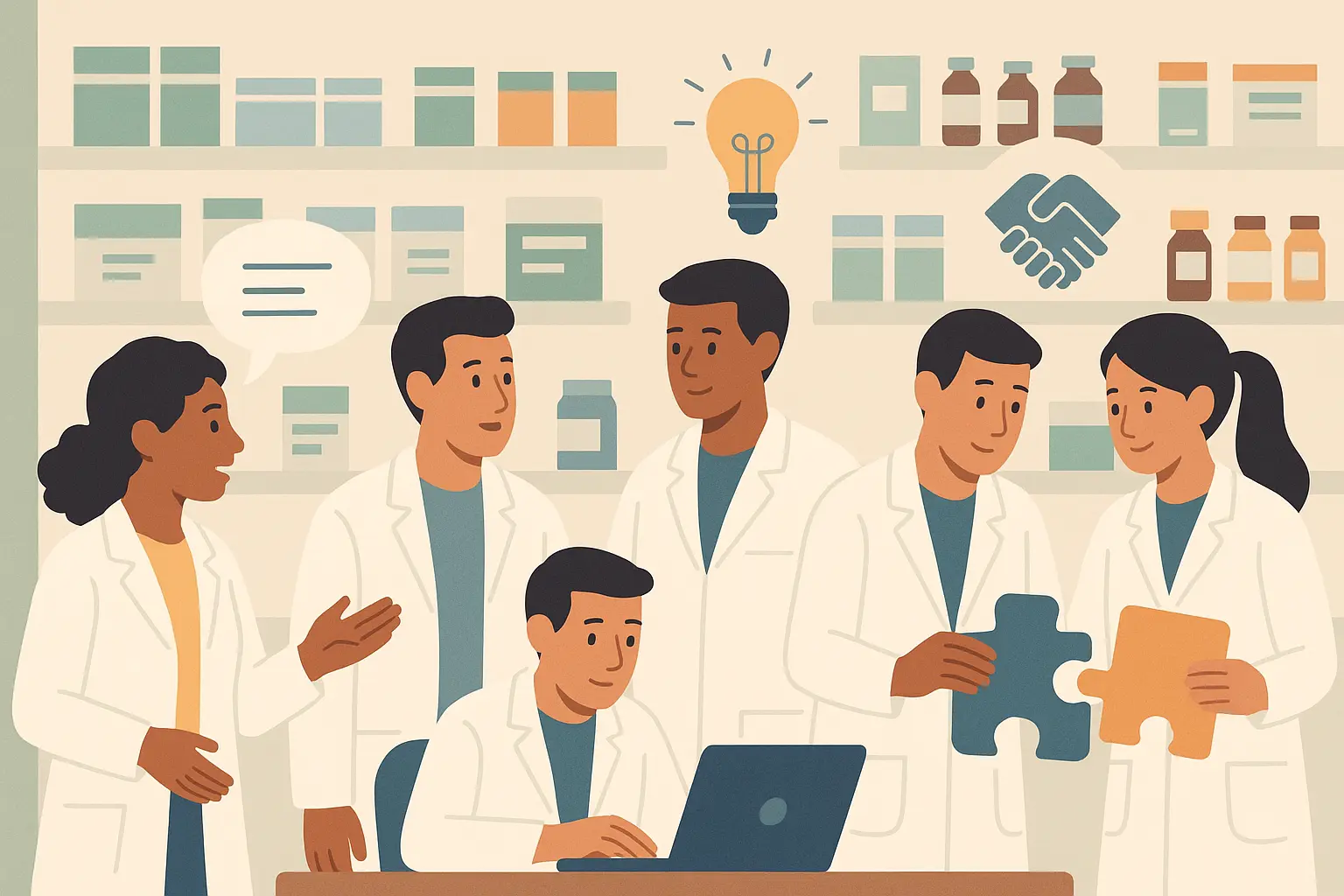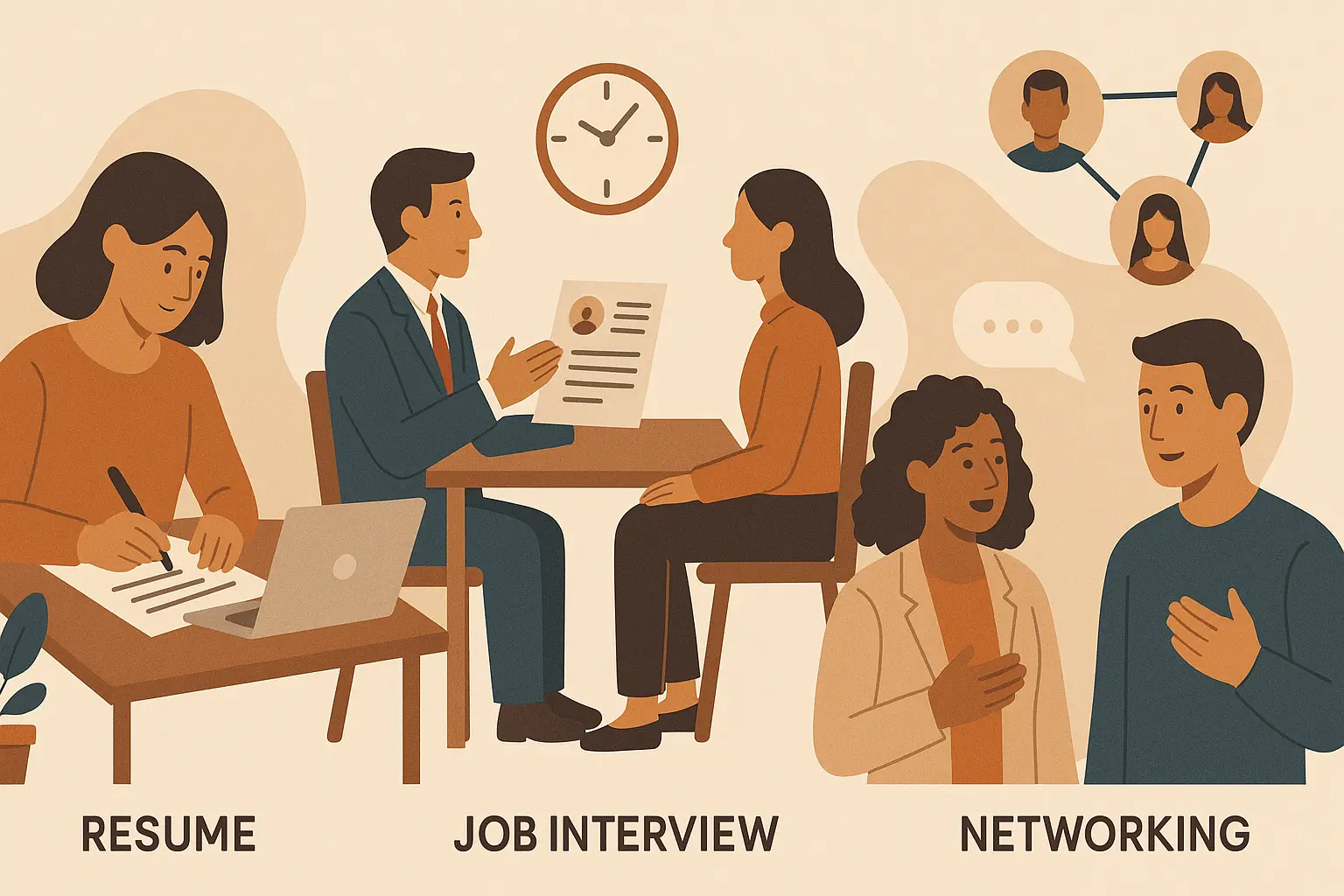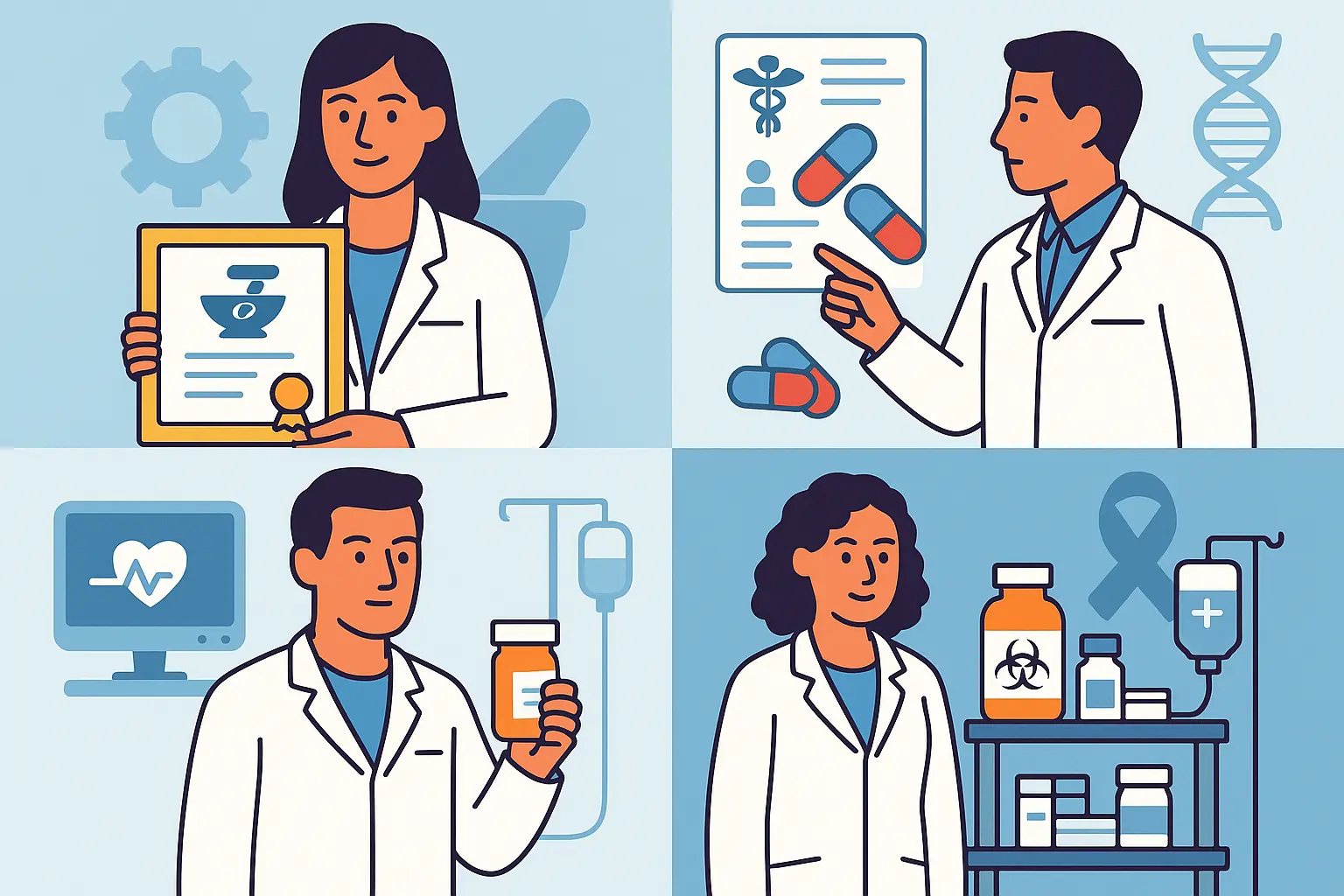What You’ll Actually Make as a Certified Pharmacy Technician (And How to Earn More)

Let me be straight with you about pharmacy tech salaries. After watching friends navigate this field for years, I’ve learned that the real numbers about certified pharmacy technician salary matter more than the marketing fluff you’ll find elsewhere.
Most certified pharmacy technicians earn between $28,000-$45,000 annually, making the certified pharmacy technician salary a strong option for those entering healthcare.. According to the U.S. Bureau of Labor Statistics, pharmacy technicians earn a median salary of $43,460 annually, making this one of the more accessible yet well-compensated healthcare careers available today. But here’s what actually determines your paycheck: where you work, what type of pharmacy hires you, and whether you get certified.
The bottom line: Certification typically bumps your salary 15-20% higher. That’s an extra $3,000-$6,000 per year that pays for itself quickly.
Table of Contents
- What You Need to Know Right Now
- Your Day-to-Day Reality
- Getting Certified: Your Fastest Path to Better Pay
- Smart Moves to Boost Your Income
TL;DR
- The certified pharmacy technician salary ranges from $28,000-$45,000 annually, with certification adding 15-20% to your paycheck.
- Location matters huge – metropolitan areas and certain states pay substantially more than rural regions
- Hospital and specialized pharmacy settings typically offer higher wages than retail chains
- Your daily responsibilities include medication preparation, customer service, and administrative tasks that require precision and multitasking
- Certification requires passing national exams (PTCB or NHA) and maintaining continuing education credits
- Specializing in areas like sterile compounding or nuclear pharmacy can significantly increase your earning potential
What You Need to Know Right Now
The Real Numbers:
- Entry-level: $28,000-$32,000
- Certified techs: $32,000-$45,000
- Hospital settings: $35,000-$45,000
- Specialized roles: $40,000-$55,000
This certified pharmacy technician salary range typically applies to those working in retail or hospital settings.
Location matters huge. The 10 top-paying locations in the U.S. are all in California except for one in Washington, according to the BLS, with California being the highest paying state in the country. California pharmacy techs can earn $50,000+, while rural areas might start you at $24,000. But don’t forget cost of living – that California salary might not stretch as far as you think.
Breaking Down Where You’ll Actually Work
The majority of pharmacy tech positions pay hourly wages ranging from $13.50 to $22.00 per hour. Understanding where most techs work helps you target the right opportunities:
| Employment Setting | Percentage of Pharmacy Techs | Average Pay Range |
|---|---|---|
| Pharmacies and drug stores | 52% | $28,000-$38,000 |
| Hospitals | 16% | $35,000-$45,000 |
| Retail grocery stores | 9% | $26,000-$35,000 |
| Specialized facilities | 23% | $40,000-$55,000 |
Why Your ZIP Code Affects Your Paycheck
Rural areas typically pay less but may offer other benefits. I know technicians who moved to smaller towns and found lower competition for positions, better work-life balance, and surprisingly good benefits packages that offset the lower base salary.
The U.S. Bureau of Labor Statistics reports employment projected to grow 6 percent from 2024 to 2034 – faster than the average for all occupations. This growth creates opportunities for salary increases as demand outpaces supply in many markets.
The Certification Premium That Actually Pays Off
Consider Sarah, an entry-level pharmacy technician earning $14/hour without certification. After obtaining her CPhT certification, she secured a position paying $16.50/hour – a $5,200 annual increase that more than paid for her certification costs within the first year. The math works in your favor every time. This shows how quickly the certified pharmacy technician salary can climb after certification.
About 49,000 openings for pharmacy technicians are projected each year, on average, over the next decade, with many openings resulting from the need to replace workers who transfer to different occupations or retire. This creates leverage for salary negotiations, especially for certified technicians.
Your Day-to-Day Reality
Forget the glossy job descriptions. Here’s what you’ll actually do as a pharmacy technician:
40% of your time: Counting pills, preparing medications, double-checking everything. You’re measuring, counting, packaging, and labeling medications under pharmacist supervision. Accuracy isn’t optional – people’s lives depend on it. You’re working with controlled substances, managing inventory worth thousands of dollars, and ensuring every prescription meets strict quality standards.
30% of your time: Dealing with customers, insurance companies, and frustrated patients. You’ll become an expert at explaining why insurance won’t cover their medication. Modern pharmacy technicians serve as the primary point of contact for patients, insurance companies, and healthcare providers.
20% of your time: Computer work, inventory, administrative tasks that keep the pharmacy running. Today’s pharmacy technicians manage inventory systems, process insurance claims, maintain electronic health records, and operate sophisticated pharmacy software.
10% of your time: Managing inventory, ordering supplies, handling the business side.
| Daily Task Category | Time Allocation | Skills Required | Impact on Salary |
|---|---|---|---|
| Medication Preparation | 40% | Precision, attention to detail | High |
| Customer Service | 30% | Communication, problem-solving | Medium |
| Administrative Tasks | 20% | Computer skills, organization | Medium |
| Inventory Management | 10% | Data analysis, forecasting | High |
The work can get stressful, especially during flu season or when the computer system crashes. But if you can stay calm under pressure and maintain accuracy, you’ll become the person managers rely on most – and pay accordingly.
Skills That Actually Get You Hired (And Paid More)
Essential Technical Skills Checklist:
- ☐ Pharmacy management software proficiency
- ☐ Insurance billing and claims processing
- ☐ Inventory management systems
- ☐ Electronic health records navigation
- ☐ Medication compounding techniques
- ☐ Quality assurance procedures
- ☐ Regulatory compliance knowledge
Pharmacy work can get hectic, but technicians who stay calm and maintain their accuracy during busy periods become the ones managers rely on most – and pay accordingly.
Getting Certified: Your Fastest Path to Better Pay
Skip the fluff – here’s exactly what you need to do:
Step 1: Get your high school diploma (or equivalent). That’s the minimum everywhere.
Step 2: Complete a pharmacy tech training program. Takes 6-12 months, costs $1,000-$5,000. The training programs typically cover pharmacology, pharmacy law, medication safety, and hands-on practice with pharmacy equipment. I recommend completing a formal program even if your state doesn’t require it – the knowledge base makes certification much easier. Some employers will even pay for this.
Step 3: Pass either the PTCB or NHA national exam. The Pharmacy Technician Certification Board (PTCB) and National Healthcareer Association (NHA) offer nationally recognized certification exams that significantly enhance salary prospects. Study for 2-3 months, expect to spend $200-$300 on the exam and prep materials.
Certification Exam Preparation Timeline:
- ☐ Week 1-2: Complete eligibility requirements verification
- ☐ Week 3-6: Study core pharmacy knowledge areas
- ☐ Week 7-8: Take practice exams and identify weak areas
- ☐ Week 9-10: Intensive review and final preparation
- ☐ Week 11: Schedule and take certification exam
- ☐ Week 12: Apply for state registration if required
Step 4: Apply for state registration if required. Individual states maintain different requirements for pharmacy technician practice, including registration, licensing, and specific training mandates. Some states require registration with the state board of pharmacy, while others accept national certification as sufficient. This varies by state and usually costs under $100.
Continuing Education That Keeps You Competitive
Certified pharmacy technicians must complete continuing education credits to maintain their certification status. This ongoing education requirement ensures technicians stay current with industry developments and new technologies, maintaining their value in an evolving healthcare landscape.
MercyOne’s pharmacy technician training program demonstrates the value employers place on skilled technicians by offering full-time positions with competitive wages while candidates complete their 500 required certification hours, plus pay increases upon successful completion.
Smart Moves to Boost Your Income
Choose your workplace strategically:
If you’re looking to maximize your certified pharmacy technician salary, making smart career moves is key.
- Retail chains: Easier to get hired, lower pay
- Hospitals: Better benefits, higher wages, more complex work
- Specialty pharmacies: Highest pay, require additional training
Consider specializing:
Pharmacy technicians can substantially increase their earning potential through specialized certifications in high-demand areas:
- Sterile compounding
- Chemotherapy preparation
- Nuclear pharmacy
- Medication therapy management
Mark transitioned from retail pharmacy to hospital sterile compounding after earning his CSPT certification. His salary increased from $32,000 annually to $48,000, plus he gained access to better benefits and more predictable scheduling. The specialized knowledge made him indispensable to his employer.
Geographic arbitrage works: Some techs move to areas with higher wages but lower living costs. Research carefully, but the math can work in your favor.
How to Actually Land Higher-Paying Positions
Your resume needs to tell a story with numbers. Instead of “handled prescriptions,” write “processed 200+ prescriptions daily with 99.8% accuracy.” Employers pay for results, not job duties.
Pharmacy Technician Resume Optimization Checklist:
- ☐ Lead with certifications and licenses prominently displayed
- ☐ Quantify achievements with specific numbers and metrics
- ☐ Highlight relevant software and technical proficiencies
- ☐ Include specialized training and continuing education
- ☐ Emphasize customer service and accuracy achievements
- ☐ Use industry-specific keywords for ATS optimization
- ☐ Include relevant volunteer or internship experience
Interview prep that actually works:
Research the specific pharmacy before you walk in. Know their patient population, services offered, and recent news or expansions. This shows genuine interest and helps you ask informed questions about growth opportunities and compensation structure.
Practice explaining how you solve real problems. Can you reduce wait times? Improve insurance resolution rates? Handle difficult customer situations? Employers pay more for technicians who make their operations smoother and more profitable.
Networking That Opens Doors
The pharmacy world is smaller than you think. I’ve found that attending pharmacy conferences and joining professional organizations leads to job opportunities that never get posted online. The pharmacy community is smaller than you might think, and reputation matters significantly.
Simple networking strategies:
- Join your state pharmacy association
- Attend continuing education events
- Build relationships with pharmacists and other techs
- Stay connected with classmates from training programs
Jennifer started as a retail pharmacy technician earning $28,000 annually. After obtaining her Advanced Certified Pharmacy Technician credential and specializing in medication therapy management, she secured a hospital position paying $52,000 with comprehensive benefits. The investment in advanced certification paid off within two years.
The Real Career Path
Most people don’t realize pharmacy tech can be a stepping stone to bigger things. Pacific University’s new five-year pharmacy pathway program allows pharmacy technicians to continue working while pursuing their PharmD degree, with licensed pharmacists making on average 3.5 times more per year than their technician peers. This demonstrates the long-term earning potential available through continued education.
But even staying as a tech, you can build a solid middle-class career. Focus on:
- Getting certified first
- Building relationships in your local pharmacy community
- Staying current with continuing education
- Considering specializations that interest you
Long-Term Thinking
Continuing education isn’t just required – it’s your competitive advantage. Stay current with new medications, technology changes, and industry trends. This knowledge keeps you valuable and promotable.
Consider the bigger picture: Some techs use this as a stepping stone to pharmacy school, nursing, or healthcare administration. Others build 20-year careers in specialized areas. Both paths can work.
The math on specialization: Advanced certifications cost $500-$2,000 but can increase your salary $8,000-$15,000 annually. That’s solid ROI if you’re committed to the field.
Reality Check
This isn’t a get-rich-quick career. You’ll start modestly and build over time. But it’s one of the few healthcare careers that doesn’t require years of expensive education upfront.
The work can be repetitive and stressful. You’ll deal with insurance problems, impatient customers, and the pressure of handling medications that affect people’s health. But if you can handle those challenges, you’ll find stable employment with decent pay and room to grow.
The pharmacy field is growing faster than average, with about 49,000 new openings projected annually. That’s good news for anyone entering the field or looking to advance.
Your next steps:
- Research training programs in your area
- Talk to working pharmacy techs about their experience
- Visit different types of pharmacies to see what appeals to you
- Start the certification process if you’re committed
Bottom line: Pharmacy tech offers a legitimate path to stable, middle-class income without requiring a four-year degree. Get certified, choose your employer wisely, and you can build a career that pays the bills and offers room to grow.
The opportunities are there. The question is whether you’re ready to put in the work to grab them.

